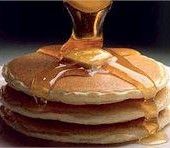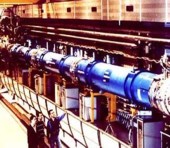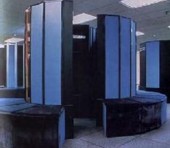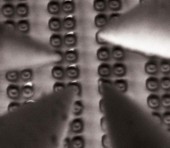
Mmm…Everyone loves a hot stack of pancakes, but did you know that you can make pancakes any time you want? How delicious.
Basically, pancakes are composed of base-proteins (large molecules composed of one or more chains of amino acids), lipids (long chains of poly-bonded hydrogen, carbon, and oxygen) and carbohydrates (a compound or molecule that is composed of carbon, oxygen and hydrogen in the ratio of 2H:1C:1O).

Using any basic matter as a starting material, you can begin making your pancakes. First, separate the molecular constituents of your starter matter using any advanced particle accelerator. With collisions, you should be able to separate the matter into its component atoms. Be sure to channel the atoms you need to a Penning trap or a Ioffe-Pritchard trap, depending on what’s available.

Next, use a magnetic field generator (class VI or higher) to carefully arrange the separated atoms into the desired molecules, taking care to note the appropriate use of chemical, covalent and hydrogen bonds.

With a supercomputer, such as the Cray, you can create a molecular mapping program to help you properly understand the exact way to create particularly complicated molecules such as the polysaturated lipid chains as well as complex sugars such as fructose. Try not to let that pesky Heisenberg Uncertainty Principle get in your way.

Once you have created the molecules you will need, consult or create genome maps for bovines, poultry fowls and wheat. These genome maps will allow you to form the molecules into proper cellular structures using an electron microscope and electrically charged probes. Then, simply create the pancakes by pushing the molecules along a magnetic plate with your handy probe.
Be sure to heat your pancakes before eating and don’t forget the syrup. Yummy!
